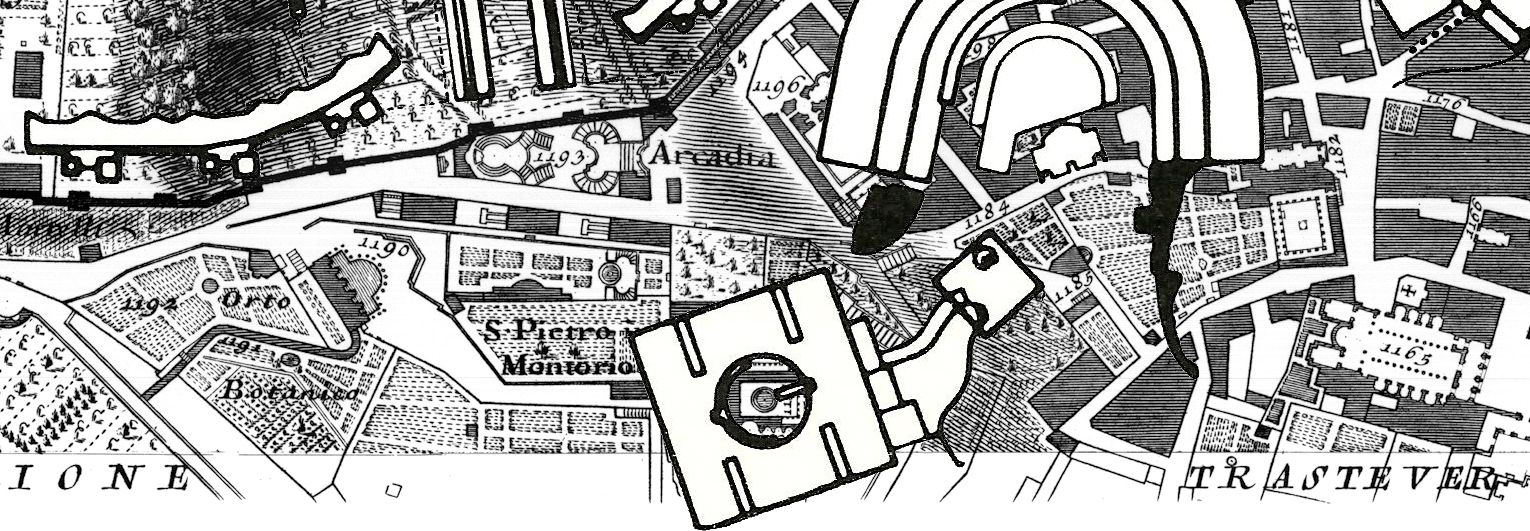| |
| |
"Continuing further into Trastevere one reaches a new piazza (Derby Town Center, project, 1970). The edges of medieval urbanism are here reordered to define a central space and the focusing element is the Entrance Pavilion to a new Museum (Düsseldorf Kunstgalerie, project, 1975). The new piazza, with its shopping arcade and civic accommodation, represents a secular alternative to the Piazza Sta. Maria in Trastevere, the religious centre of the area for many centuries.
The new Museum of Architecture contains, as its main feature, Bramante's Tempietto. This may be seen in the circular garden of the museum in a setting similar to the one originally intended by Bramante. Serlio describes the unbuilt setting around the Tempietto, as intended by Bramante, to be 'a concentric circular colonnade incorporated into the interior of the present courtyard.' The relationship of the two concentric circular elements--Tempietto and courtyard--is the expression of Renaissance religious symbolism. A public pedestrian walkway connects from the entrance pavilion through this circular garden and up into the famous Fontana Paolina. Not far from the museum are the Steps of the Arcadians, the quarters of a group of poets who aimed to 'return poetry to the purity of classical traditions.'"
James Stirling, Roma Interrotta: Sector IV (1978).
| |
In collaging the Museum for Nordrhien Westfalen into the Nolli Plan of Rome, however, Stirling significantly increased the scale of the original museum design, almost doubling it in size.
|
